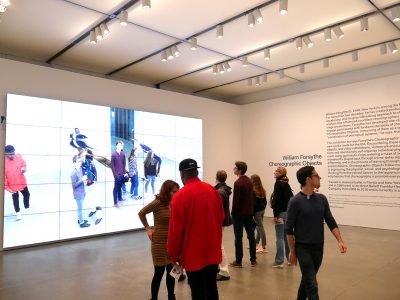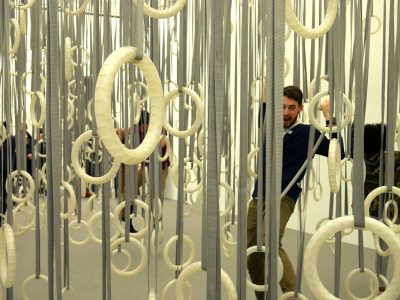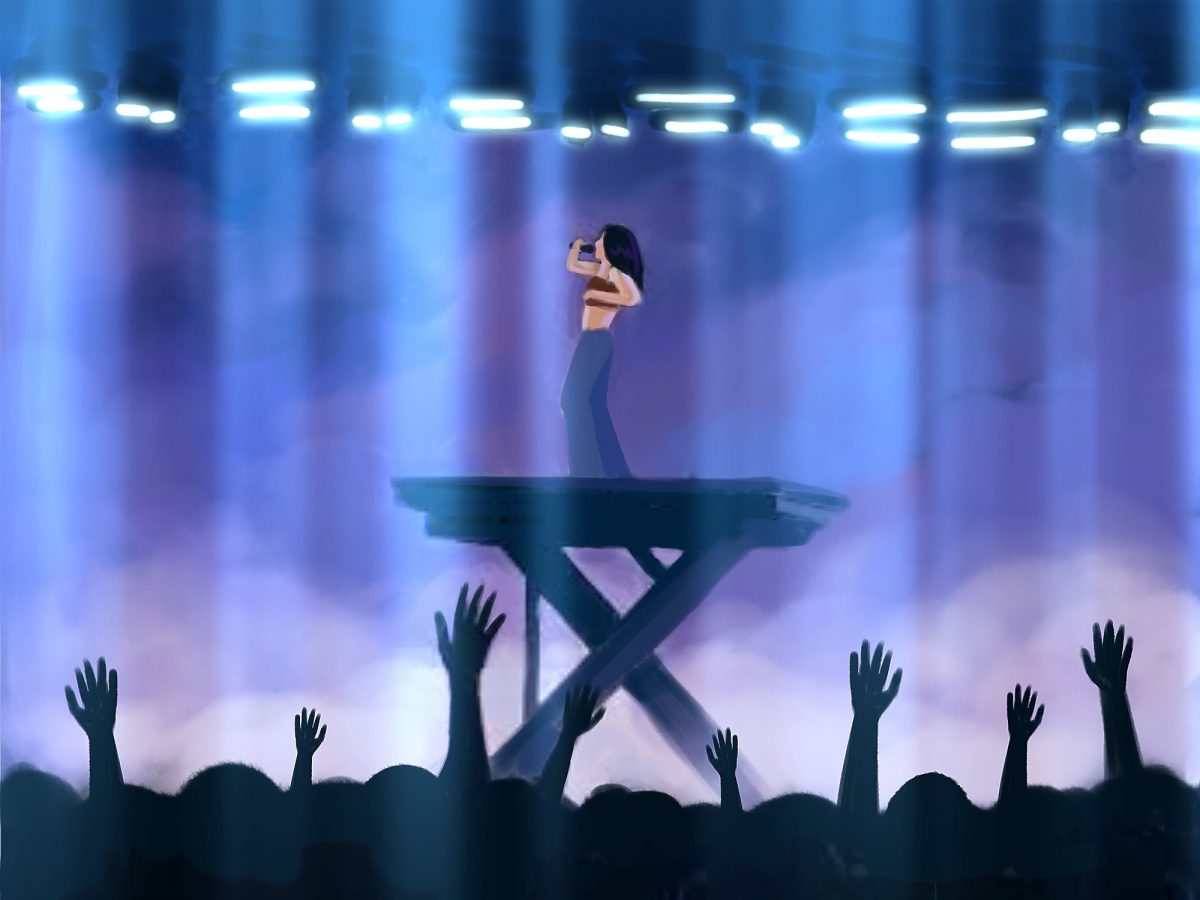Visitors of the Institute of Contemporary Art can become part of the art at the museum’s newest exhibition: William Forsythe’s “Choreographic Objects.” Dance throughout pieces and interact with an array of objects to become a part of the choreography.

The exhibit is filled with interactive art that integrates the elements of motion into physical pieces. “Choreographic Objects” opened to the public Wednesday and will be on display until Feb. 21, 2019, at the ICA.
Forsythe is a world-renowned choreographer who specializes in classical ballet dance and currently has a five-year residency as a choreographer at the Boston Ballet. His newest exhibit at the ICA features 11 pieces designed for visitors to touch and move around.
The project took about two years to finish, according to Forsythe. His artwork takes on many forms — from a piece that has visitors open a heavy steel door to a room full of plastic polycarbonate rings of all sizes hanging from the ceiling.
“The movement from the works is choreography,” Forsythe said in an interview with The Daily Free Press.
Forsythe said he hoped that through enlisting the visitors to help produce the work, they would benefit from the individualistic element of creating the choreography.
Forsythe defined “Choreographic Objects” as “hybrids of sculpture, video and architecture.” He explained that the viewer’s role makes the work, and without this, the art would be incomplete.
Each work features a description and a set of instructions for interaction. One piece is entirely made up of directions on multiple chalkboards. Because the sequences are up to interpretation, each visitor creates a unique choreography.
Forsythe said that for him, choreography is a medium to convey emotion and responses to stimuli. However, he said, it doesn’t necessarily have to be meticulously practiced, as it is in an art like ballet.

Another piece in the exhibit, titled “The Fact of Matter,” features small rings hanging off the ceiling that visitors are meant to climb and navigate through in a vast room. Forsythe said that some movements cannot be detailed by instructions because the various interpretations individuals have of movement provide a complex and intriguing display.
Jeffrey De Blois, an assistant curator at the ICA and a BU graduate alumnus, said that his favorite piece in the exhibit is “Nowhere and Everywhere at the Same Time,” which is the last one in the Forsythe exhibit. It features pendulums that swing all throughout the room.
“[It’s] incredibly interesting to watch how people sort of contort and move through the space to try to avoid [the pendulums],” De Blois said. “But it’s also amazing and tells you so much about yourself as you go through it.”
Throughout the exhibit, muted music plays in the background, reminiscent of a sci-fi movie soundtrack. It’s so quiet — it’s almost impossible to hear it unless one listens closely.
One work that is small in comparison to other pieces is “Towards the Diagnostic Gaze.” This piece is made up of a feather duster placed on a granite shelf. Directions written on the shelf instruct visitors to pick up the duster and hold it as still as possible.
This piece shows visitors that motion is constant, as the duster trembles due to the air and heartbeat of the hand.
De Blois said he admires Forsythe’s openness to playing with his style.
“He is never satisfied,” De Blois said. “Even though he has accomplished so much, he [has] still remained fully committed to experimentation.”
Amanda Xu, a freshman in Boston University’s College of General Studies, said she’s been to the ICA before but had not known about this new exhibit. She said she’s interested in visiting the exhibit in the future, and she’ll keep in mind the background music component.
“[I would] bring a friend because ambient music [is] not very becoming, and it scares me,” Xu said.
De Blois said he wants people who see the exhibit to walk away with increased awareness of themselves.
“[I hope visitors feel] joy from participating, … an unadorned sense of their body and how they occupy space and move through space,” De Blois said.

















































































































Kathleen Carr • Nov 11, 2018 at 7:01 am
Bravo bravo to both gentleman
Dancers are very creative with body mind and spirit. I’ve been teaching children for about 20 years. I think of the choreography and every piece is performed different with a child.
Looking forward to the visit.
Regards,
Kathy